Title
Baba or yau-baba (bell-shaped woven mask)
mid 20th century
collected 1965
Artist
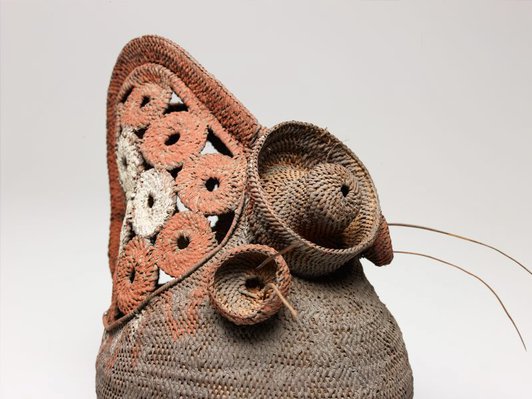
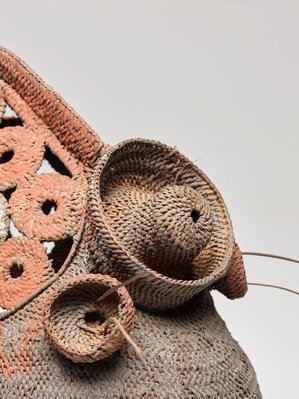
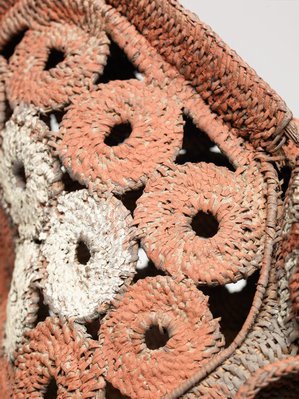

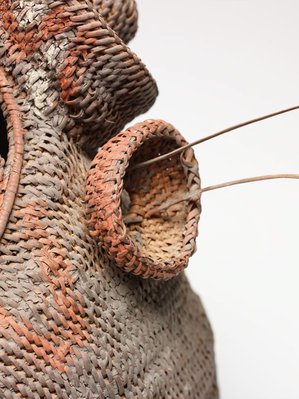
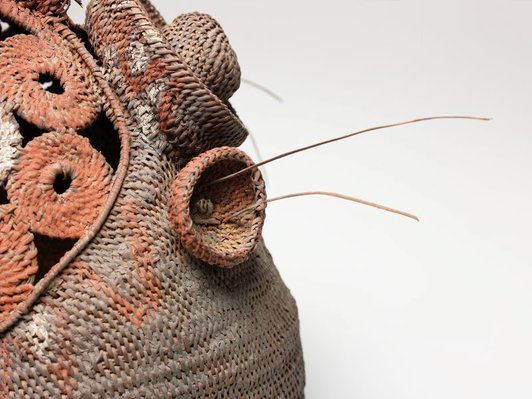

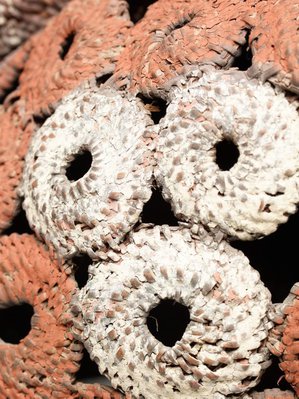
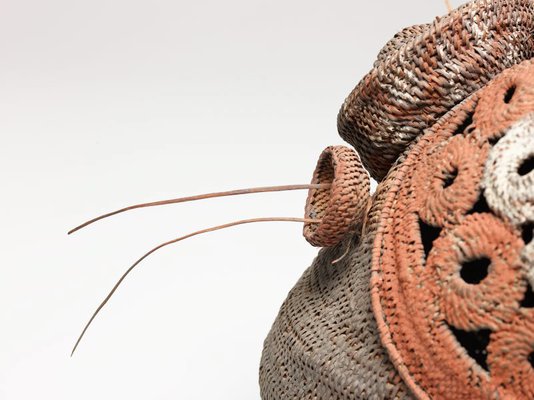

-
Details
- Other Titles
- Helmet mask
baba tagwa mask - Place where the work was made
-
Maprik District
→
East Sepik Province
→
Papua New Guinea
- Cultural origin
- Abelam people
- Dates
- mid 20th century
collected 1965 - Media categories
- Weaving , Ceremonial object , Sculpture
- Materials used
- coil-woven rattan cane, plant fibre, red ochre and white pigment
- Dimensions
- 38.5 x 28.0 x 34.0 cm
- Credit
- Purchased 1965
- Location
- Not on display
- Accession number
- 389.1994
- Copyright
- Artist information
-
Abelam people
Works in the collection
- Share
-
-
About
'Baba' masks form part of a full-body costume that is used during initiations. 'Yau-baba' masks are used in communal and private 'yam scenes' – displayed in the secret room of the yam-storage house together with 'urungwall figures' – to promote the growth of yams. They may also be shown together with shell rings in a private yam scene. A 'yau-baba' usually has its own name and is also linked to success in hunting pigs.
The pigments used on woven 'baba' or 'yau-baba' masks, 'urungwall' figures and 'bai' paintings are sourced from natural ochres and paints. Colours are believed to have magical properties if used with spells or mixed with certain ingredients.
[entry from Exhibition Guide for 'Melanesian art: redux', 2018, cat no 24]
-
Exhibition history
Shown in 2 exhibitions
Aboriginal and Melanesian art, Art Gallery of New South Wales, Sydney, 19 Oct 1974 -
Melanesian art: redux, Art Gallery of New South Wales, Sydney, 17 Nov 2018–17 Feb 2019
-
Bibliography
Referenced in 1 publication
-
Tony Tuckson, Aboriginal and Melanesian art, Sydney, 1973, 46. cat.no. 98, 'Helmet mask. Abelam. Basketry, painted. 43h. Collected 1965 (68A)'
-




